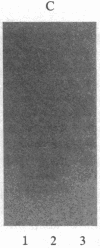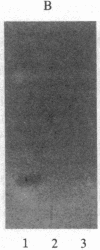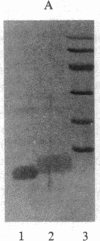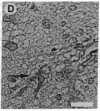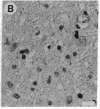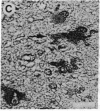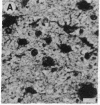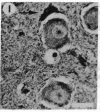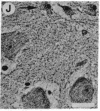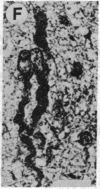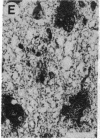Abstract
S100 refers to a heterogeneous fraction of low-molecular-weight acidic calcium-binding proteins. We report here production and characterization of two mouse hybridomas that secrete monoclonal antibodies that appear to be specific for the S100 beta polypeptide of brain S100 preparations. By ELISA, RIA, and immunoblotting analysis, the monoclonal antibodies react specifically with S100 beta and show little or no reactivity with any S100 alpha-like polypeptides. In addition, there is no reactivity with the structurally homologous proteins calmodulin and troponin C. The utility of these monoclonal antibodies for immunocytochemical studies of clinical pathology specimens has been demonstrated by examination of S100 beta localization in human autopsy brain and anaplastic astrocytoma sections. S100 beta is localized primarily in glial cell cytoplasm and processes, with no specific staining observed in glial cell nuclei, erythrocytes, or neuronal cells. These monoclonal antibodies may have important applications in pathological examination of surgical specimens as a specific marker for tumors containing S100 beta, will allow a more precise interpretation of the distribution and localization of S100 beta in both normal and neoplastic tissues, and may provide insight into the physiological functions of the S100 proteins.
Full text
PDF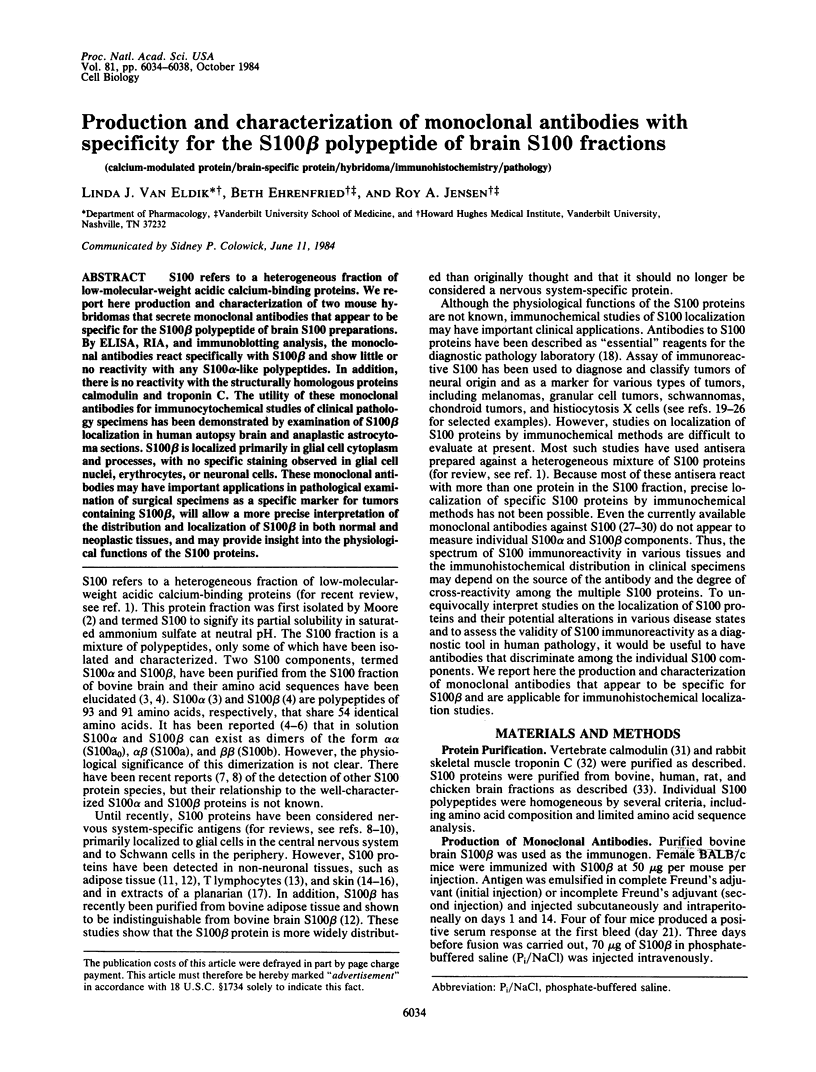
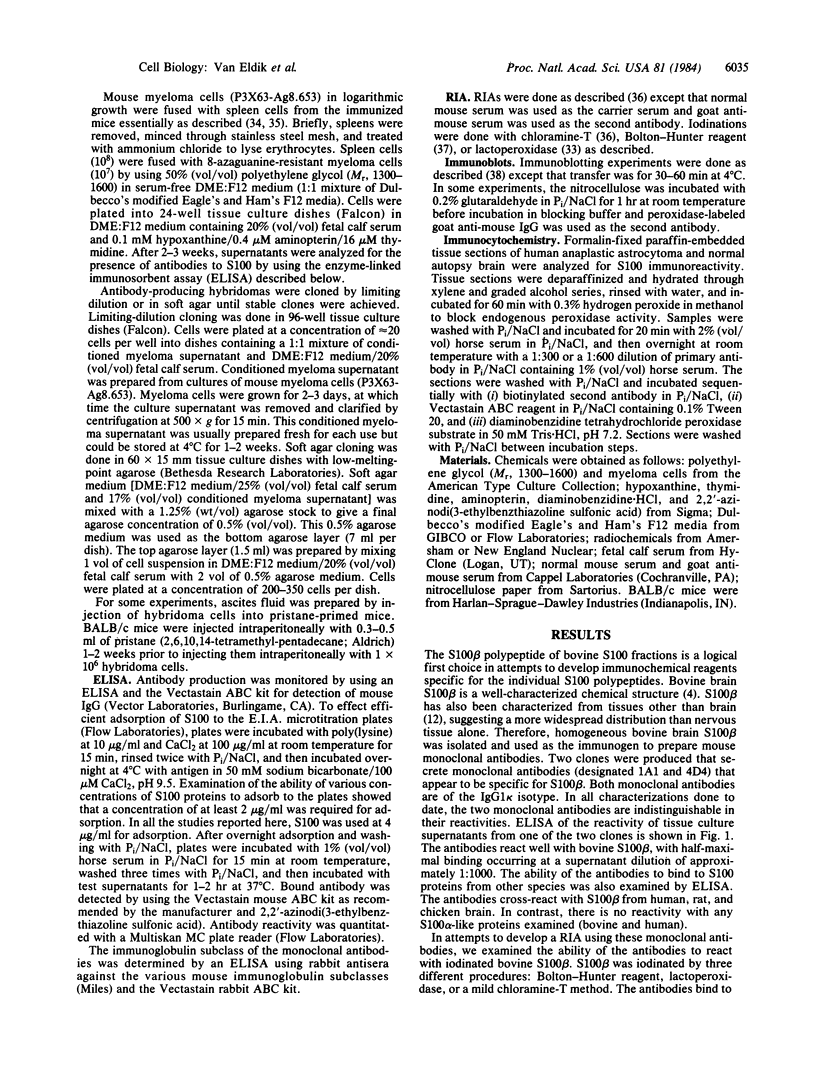
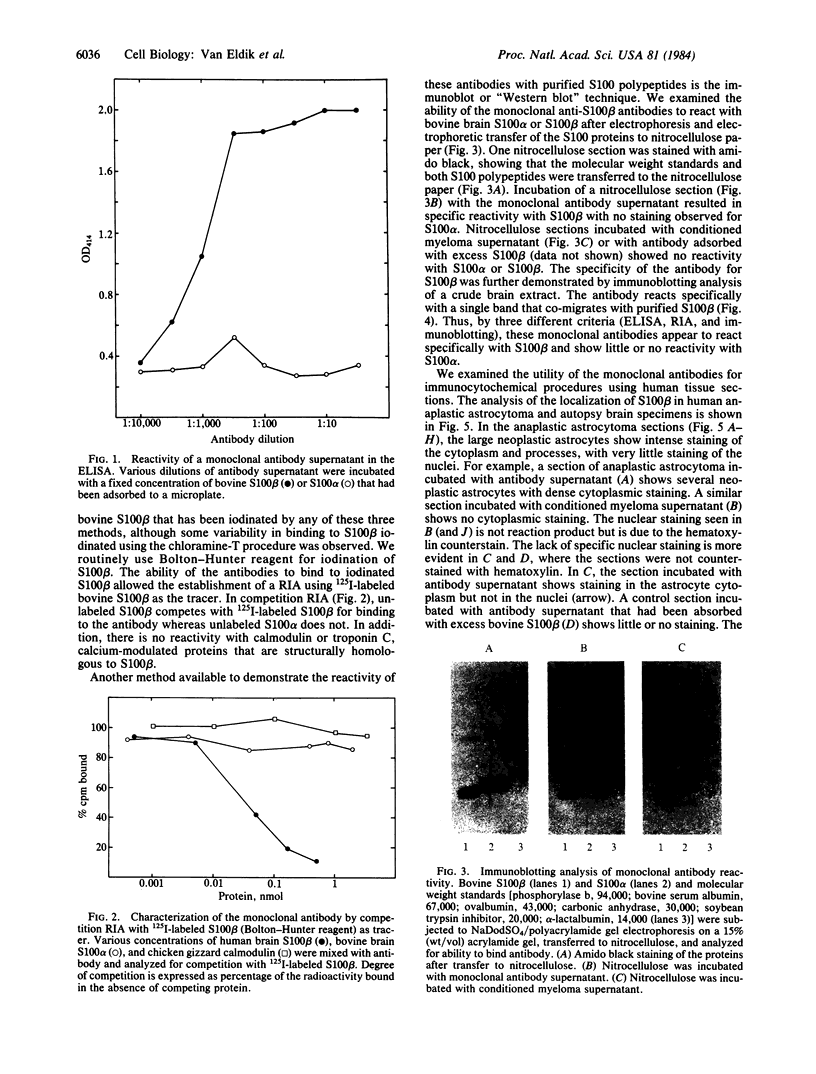
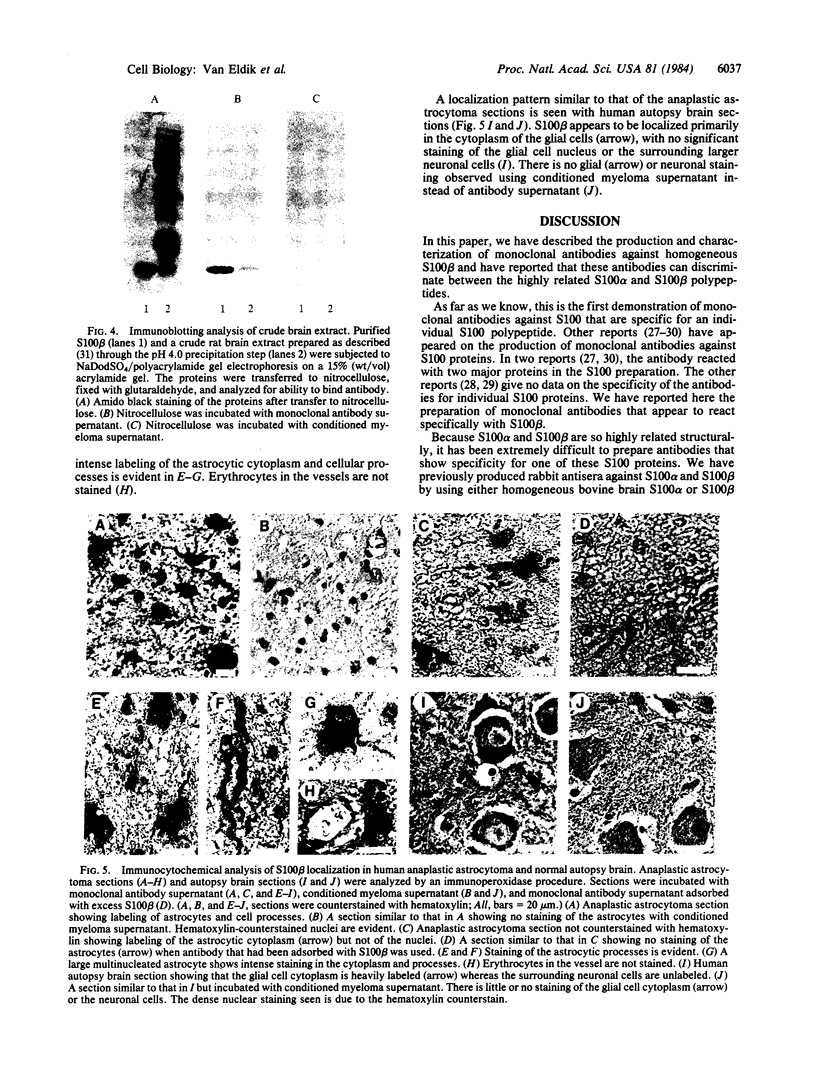
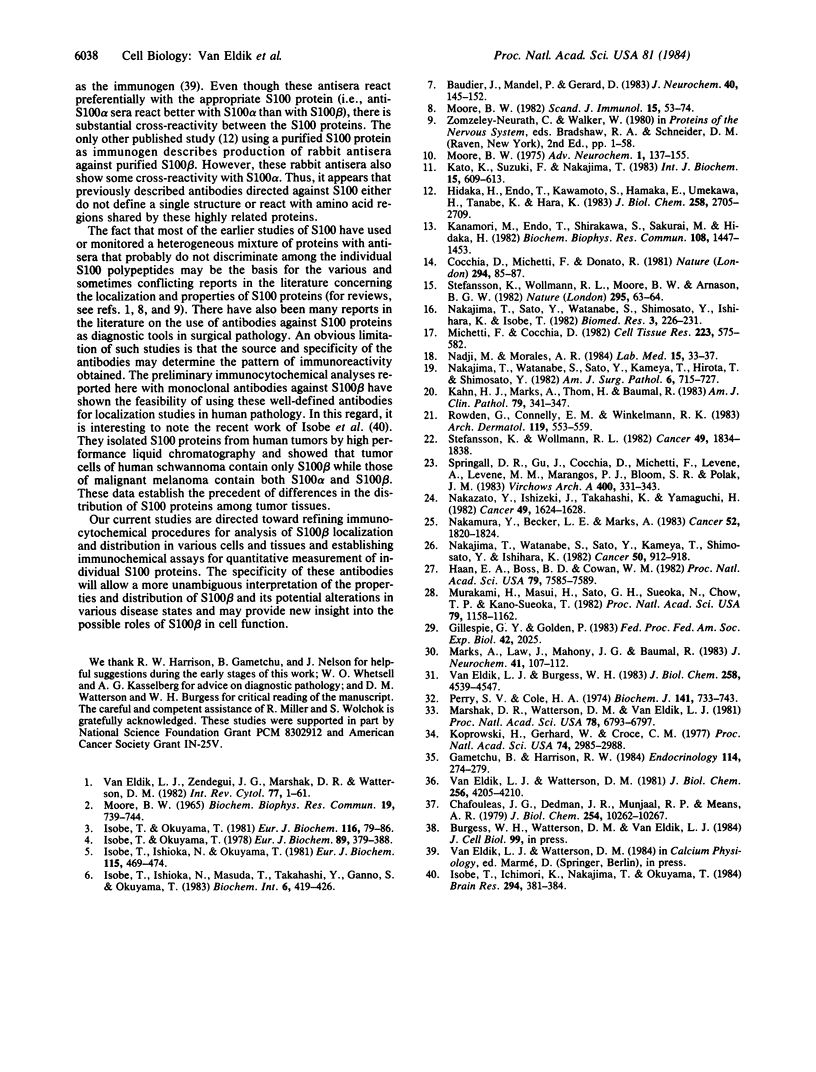
Images in this article
Selected References
These references are in PubMed. This may not be the complete list of references from this article.
- Baudier J., Mandel P., Gérard D. Bovine brain S100 proteins: separation and characterization of a new S100 protein species. J Neurochem. 1983 Jan;40(1):145–152. doi: 10.1111/j.1471-4159.1983.tb12664.x. [DOI] [PubMed] [Google Scholar]
- Chafouleas J. G., Dedman J. R., Munjaal R. P., Means A. R. Calmodulin. Development and application of a sensitive radioimmunoassay. J Biol Chem. 1979 Oct 25;254(20):10262–10267. [PubMed] [Google Scholar]
- Cocchia D., Michetti F., Donato R. Immunochemical and immuno-cytochemical localization of S-100 antigen in normal human skin. Nature. 1981 Nov 5;294(5836):85–87. doi: 10.1038/294085a0. [DOI] [PubMed] [Google Scholar]
- Gametchu B., Harrison R. W. Characterization of a monoclonal antibody to the rat liver glucocorticoid receptor. Endocrinology. 1984 Jan;114(1):274–279. doi: 10.1210/endo-114-1-274. [DOI] [PubMed] [Google Scholar]
- Haan E. A., Boss B. D., Cowan W. M. Production and characterization of monoclonal antibodies against the "brain-specific" proteins 14-3-2 and S-100. Proc Natl Acad Sci U S A. 1982 Dec;79(23):7585–7589. doi: 10.1073/pnas.79.23.7585. [DOI] [PMC free article] [PubMed] [Google Scholar]
- Hidaka H., Endo T., Kawamoto S., Yamada E., Umekawa H., Tanabe K., Hara K. Purification and characterization of adipose tissue S-100b protein. J Biol Chem. 1983 Feb 25;258(4):2705–2709. [PubMed] [Google Scholar]
- Isobe T., Ichimori K., Nakajima T., Okuyama T. The alpha subunit of S100 protein is present in tumor cells of human malignant melanoma, but not in schwannoma. Brain Res. 1984 Mar 5;294(2):381–384. doi: 10.1016/0006-8993(84)91055-2. [DOI] [PubMed] [Google Scholar]
- Isobe T., Ishioka N., Masuda T., Takahashi Y., Ganno S., Okuyama T. A rapid separation of S100 subunits by high performance liquid chromatography: the subunit compositions of S100 proteins. Biochem Int. 1983 Mar;6(3):419–426. [PubMed] [Google Scholar]
- Isobe T., Ishioka N., Okuyama T. Structural relation of two S-100 proteins in bovine brain; subunit composition of S-100a protein. Eur J Biochem. 1981 Apr;115(3):469–474. doi: 10.1111/j.1432-1033.1981.tb06225.x. [DOI] [PubMed] [Google Scholar]
- Isobe T., Okuyama T. The amino-acid sequence of S-100 protein (PAP I-b protein) and its relation to the calcium-binding proteins. Eur J Biochem. 1978 Sep 1;89(2):379–388. doi: 10.1111/j.1432-1033.1978.tb12539.x. [DOI] [PubMed] [Google Scholar]
- Isobe T., Okuyama T. The amino-acid sequence of the alpha subunit in bovine brain S-100a protein. Eur J Biochem. 1981 May;116(1):79–86. doi: 10.1111/j.1432-1033.1981.tb05303.x. [DOI] [PubMed] [Google Scholar]
- Kahn H. J., Marks A., Thom H., Baumal R. Role of antibody to S100 protein in diagnostic pathology. Am J Clin Pathol. 1983 Mar;79(3):341–347. doi: 10.1093/ajcp/79.3.341. [DOI] [PubMed] [Google Scholar]
- Kanamori M., Endo T., Shirakawa S., Sakurai M., Hidaka H. S-100 antigen in human T lymphocytes. Biochem Biophys Res Commun. 1982 Oct 29;108(4):1447–1453. doi: 10.1016/s0006-291x(82)80069-7. [DOI] [PubMed] [Google Scholar]
- Kato K., Suzuki F., Nakajima T. S-100 protein in adipose tissue. Int J Biochem. 1983;15(5):609–613. doi: 10.1016/0020-711x(83)90183-0. [DOI] [PubMed] [Google Scholar]
- Koprowski H., Gerhard W., Croce C. M. Production of antibodies against influenza virus by somatic cell hybrids between mouse myeloma and primed spleen cells. Proc Natl Acad Sci U S A. 1977 Jul;74(7):2985–2988. doi: 10.1073/pnas.74.7.2985. [DOI] [PMC free article] [PubMed] [Google Scholar]
- Marks A., Law J., Mahony J. B., Baumal R. The structural conservation of S100 protein during evolution: analysis by reactivity with a monoclonal antibody. J Neurochem. 1983 Jul;41(1):107–112. doi: 10.1111/j.1471-4159.1983.tb11820.x. [DOI] [PubMed] [Google Scholar]
- Marshak D. R., Watterson D. M., Van Eldik L. J. Calcium-dependent interaction of S100b, troponin C, and calmodulin with an immobilized phenothiazine. Proc Natl Acad Sci U S A. 1981 Nov;78(11):6793–6797. doi: 10.1073/pnas.78.11.6793. [DOI] [PMC free article] [PubMed] [Google Scholar]
- Michetti F., Cocchia D. S-100-like immunoreactivity in a planarian. An immunochemical and immunocytochemical study. Cell Tissue Res. 1982;223(3):575–582. doi: 10.1007/BF00218477. [DOI] [PubMed] [Google Scholar]
- Moore B. W. A soluble protein characteristic of the nervous system. Biochem Biophys Res Commun. 1965 Jun 9;19(6):739–744. doi: 10.1016/0006-291x(65)90320-7. [DOI] [PubMed] [Google Scholar]
- Moore B. W. Chemistry and biology of the S-100 protein. Scand J Immunol Suppl. 1982;9:53–74. doi: 10.1111/j.1365-3083.1982.tb03758.x. [DOI] [PubMed] [Google Scholar]
- Murakami H., Masui H., Sato G. H., Sueoka N., Chow T. P., Kano-Sueoka T. Growth of hybridoma cells in serum-free medium: ethanolamine is an essential component. Proc Natl Acad Sci U S A. 1982 Feb;79(4):1158–1162. doi: 10.1073/pnas.79.4.1158. [DOI] [PMC free article] [PubMed] [Google Scholar]
- Nakajima T., Watanabe S., Sato Y., Kameya T., Hirota T., Shimosato Y. An immunoperoxidase study of S-100 protein distribution in normal and neoplastic tissues. Am J Surg Pathol. 1982 Dec;6(8):715–727. doi: 10.1097/00000478-198212000-00003. [DOI] [PubMed] [Google Scholar]
- Nakajima T., Watanabe S., Sato Y., Kameya T., Shimosato Y., Ishihara K. Immunohistochemical demonstration of S100 protein in malignant melanoma and pigmented nevus, and its diagnostic application. Cancer. 1982 Sep 1;50(5):912–918. doi: 10.1002/1097-0142(19820901)50:5<912::aid-cncr2820500519>3.0.co;2-u. [DOI] [PubMed] [Google Scholar]
- Nakamura Y., Becker L. E., Marks A. S-100 protein in tumors of cartilage and bone. An immunohistochemical study. Cancer. 1983 Nov 15;52(10):1820–1824. doi: 10.1002/1097-0142(19831115)52:10<1820::aid-cncr2820521010>3.0.co;2-3. [DOI] [PubMed] [Google Scholar]
- Nakazato Y., Ishizeki J., Takahashi K., Yamaguchi H. Immunohistochemical localization of S-100 protein in granular cell myoblastoma. Cancer. 1982 Apr 15;49(8):1624–1628. doi: 10.1002/1097-0142(19820415)49:8<1624::aid-cncr2820490816>3.0.co;2-h. [DOI] [PubMed] [Google Scholar]
- Perry S. V., Cole H. A. Phosphorylation of troponin and the effects of interactions between the components of the complex. Biochem J. 1974 Sep;141(3):733–743. doi: 10.1042/bj1410733. [DOI] [PMC free article] [PubMed] [Google Scholar]
- Rowden G., Connelly E. M., Winkelmann R. K. Cutaneous histiocytosis X. The presence of S-100 protein and its use in diagnosis. Arch Dermatol. 1983 Jul;119(7):553–559. doi: 10.1001/archderm.119.7.553. [DOI] [PubMed] [Google Scholar]
- Springall D. R., Gu J., Cocchia D., Michetti F., Levene A., Levene M. M., Marangos P. J., Bloom S. R., Polak J. M. The value of S-100 immunostaining as a diagnostic tool in human malignant melanomas. A comparative study using S-100 and neuron-specific enolase antibodies. Virchows Arch A Pathol Anat Histopathol. 1983;400(3):331–343. doi: 10.1007/BF00612194. [DOI] [PubMed] [Google Scholar]
- Stefansson K., Wollmann R. L., Moore B. W., Arnason B. G. S-100 protein in human chondrocytes. Nature. 1982 Jan 7;295(5844):63–64. doi: 10.1038/295063a0. [DOI] [PubMed] [Google Scholar]
- Stefansson K., Wollmann R. L. S-100 protein in granular cell tumors (granular cell myoblastomas). Cancer. 1982 May 1;49(9):1834–1838. doi: 10.1002/1097-0142(19820501)49:9<1834::aid-cncr2820490916>3.0.co;2-g. [DOI] [PubMed] [Google Scholar]
- Van Eldik L. J., Burgess W. H. Analytical subcellular distribution of calmodulin and calmodulin-binding proteins in normal and virus-transformed fibroblasts. J Biol Chem. 1983 Apr 10;258(7):4539–4547. [PubMed] [Google Scholar]
- Van Eldik L. J., Watterson D. M. Reproducible production of antiserum against vertebrate calmodulin and determination of the immunoreactive site. J Biol Chem. 1981 May 10;256(9):4205–4210. [PubMed] [Google Scholar]
- Van Eldik L. J., Zendegui J. G., Marshak D. R., Watterson D. M. Calcium-binding proteins and the molecular basis of calcium action. Int Rev Cytol. 1982;77:1–61. doi: 10.1016/s0074-7696(08)62463-8. [DOI] [PubMed] [Google Scholar]



